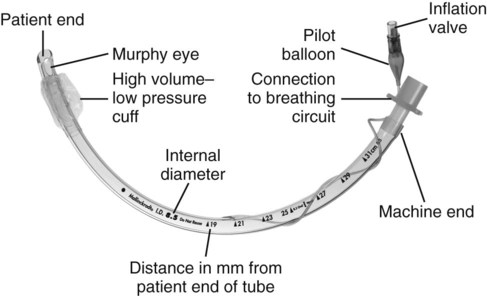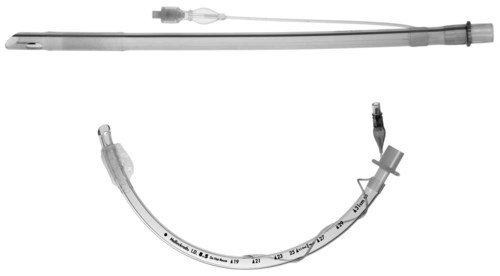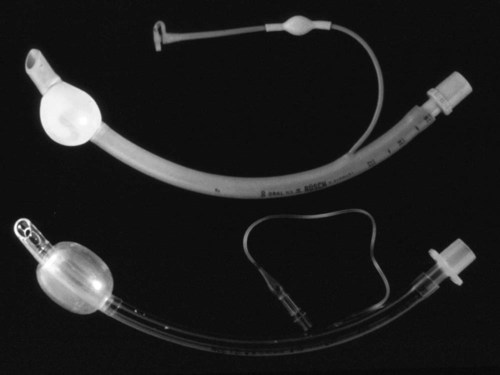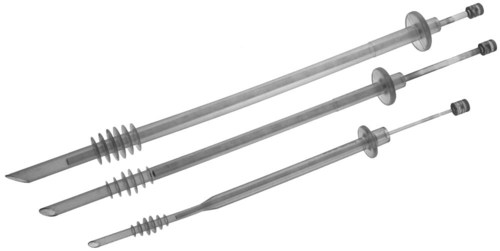A Most are made of polyvinyl chloride (PVC), silicone, or rubber B Generally the PVC tubes have a curvature to facilitate placement. Silicone tubes lack a curvature and are less stiff than PVC or rubber. C PVC tubes are available in several sizes: 2-10 mm internal diameter (ID). Size 2 is uncuffed. PVC cannot be steam autoclaved. D Larger sizes are available for larger animals A Sizes: endotracheal tubes are sized by ID (mm); outside diameter (OD, mm, or French [3 × OD]). OD is typically 3 to 4 mm larger than ID, depending on the overall tube size. B Cuffed endotracheal tubes (Fig. 11-3) 1. High volume-low pressure: cuff volume is relatively large 2. Low volume-high pressure: cuff is more ovoid when inflated
Equipment for Tracheal Intubation and Securing the Airway
Overview
Endotracheal Tubes (Fig. 11-1)







